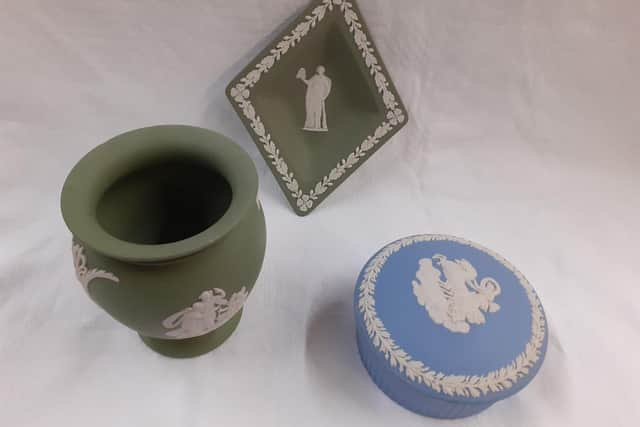Looking back at the history of the 'father of English pottery'
and live on Freeview channel 276
As we look forward to enjoying coffee, cake, or a full-on tuck-in inside our favourite restaurants and cafes once more, it’s very fitting that we’re approaching the founding date of one of the great British pottery firms.
On May 1st 1759, talented young potter Josiah Wedgwood, the ‘father of English potters’ struck out from the family firm to found Josiah Wedgwood & Sons Ltd near Stoke on Trent. Over 250 years on, most homes still contain a piece of Wedgwood crockery or decorative ware.
Advertisement
Hide AdAdvertisement
Hide AdStarting with a line of creamware, then Black Basalt, by the mid 18th century products ranged from plaques and statues to brooches and snuff boxes, of which we always have a good range in the centre, along with items of his perennially popular Jasper ware, starting at £5 for single pieces as pictured.


Early Queen’s Ware pieces in excellent condition today, for which he was appointed ‘Potter to Her Majesty’ by Queen Charlotte, can achieve tens of thousands of pounds. His ‘Frog Service’, designed for Catherine the Great in 1773 and featuring a green frog perched within a border of oak leaves, fetches even more.
His most recognisable innovation must be Jasper ware, unglazed, blue coloured pottery with a white relief decoration (often with a classical theme).
First introduced in 1775, Wedgwood’s crowning achievement is recognisable to even those with little interest in antiques.
Advertisement
Hide AdAdvertisement
Hide AdFortuitously for us collectors, Josiah Wedgwood was an early adopter of the manufacturing mark, giving him the ability to sue imitators in court. From 1781, nearly all genuine Wedgwood was marked ‘Wedgwood & Sons Ltd’; not the confusingly similar ‘Wedgwood and Co.’ or ‘Wedgewood’.
From 1860, a system of letter and number codes was also added which identified the month and year of manufacture as well as the name of the potter who threw the ware.
Like many firms, over the centuries, Wedgwood has been through turbulent times. Owned since 2015 by Finnish firm Fiskars, along with Waterford, Royal Doulton, and Royal Albert, production continues. Albeit only a fraction still in England, its reputation ensures continuing collaborations with major designers like Vera Wang and Jasper Conran.
As we start to enjoy eating out again as well as eating in, it looks likely Wedgwood will continue to furnish our homes with ornaments, eggcups, teacups and dinner plates for many years to come.
Comment Guidelines
National World encourages reader discussion on our stories. User feedback, insights and back-and-forth exchanges add a rich layer of context to reporting. Please review our Community Guidelines before commenting.